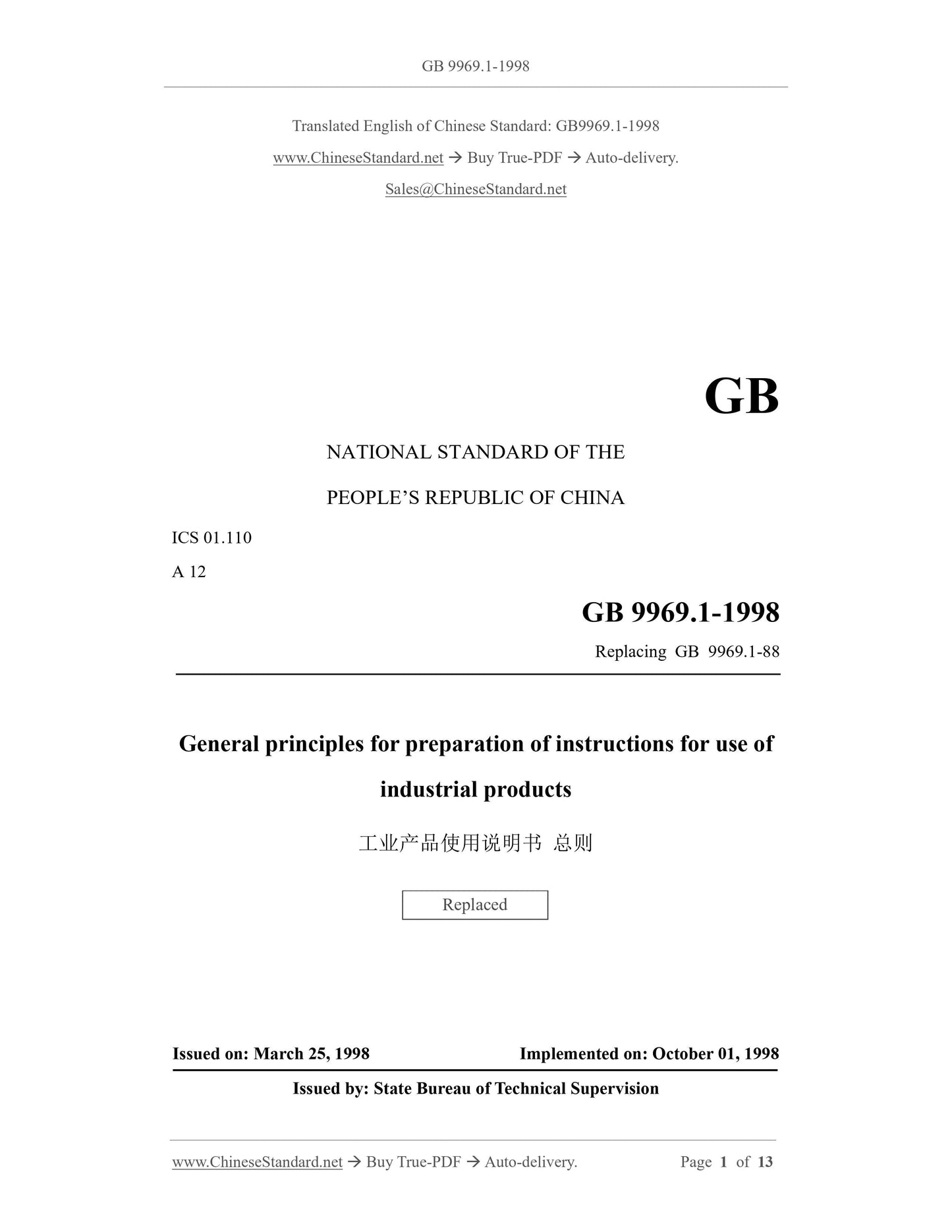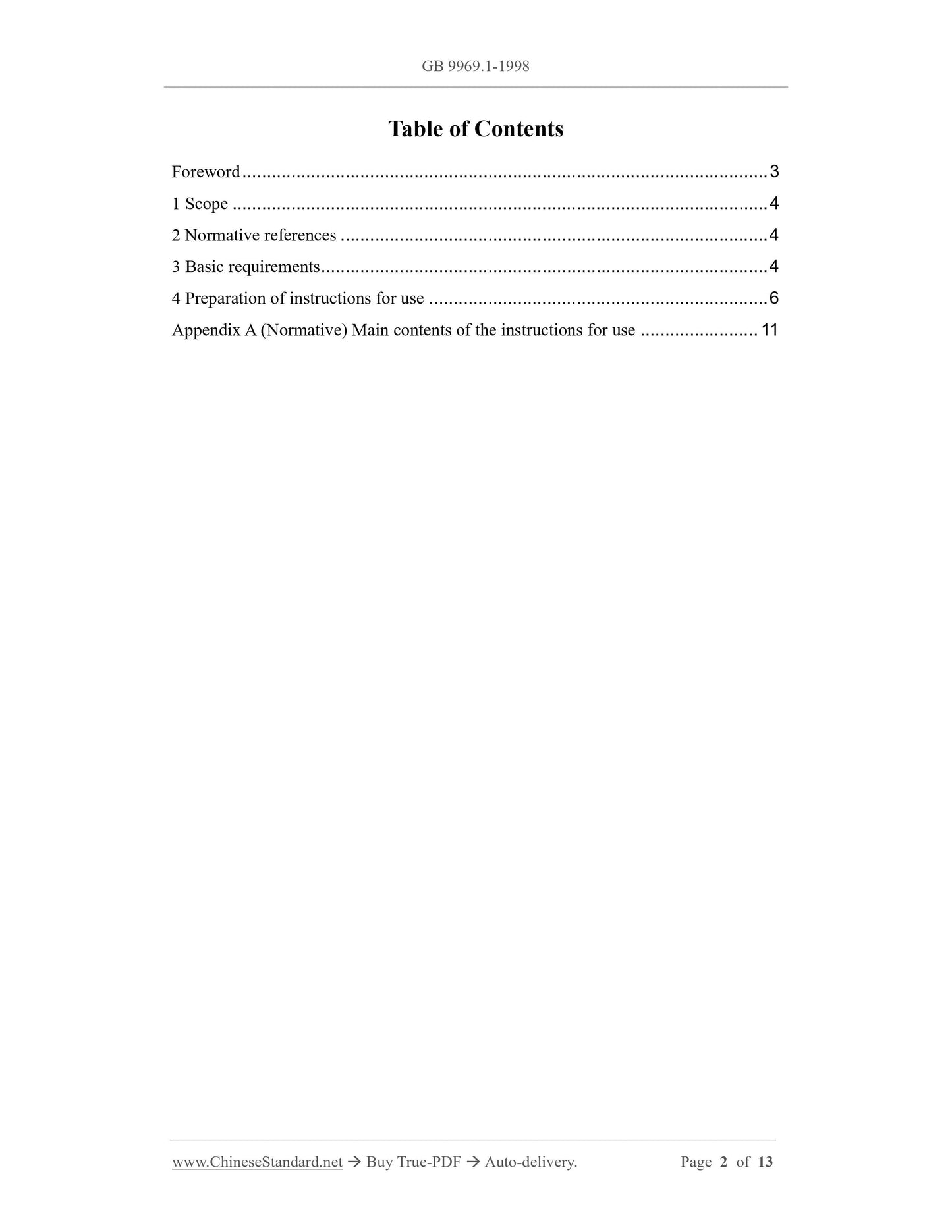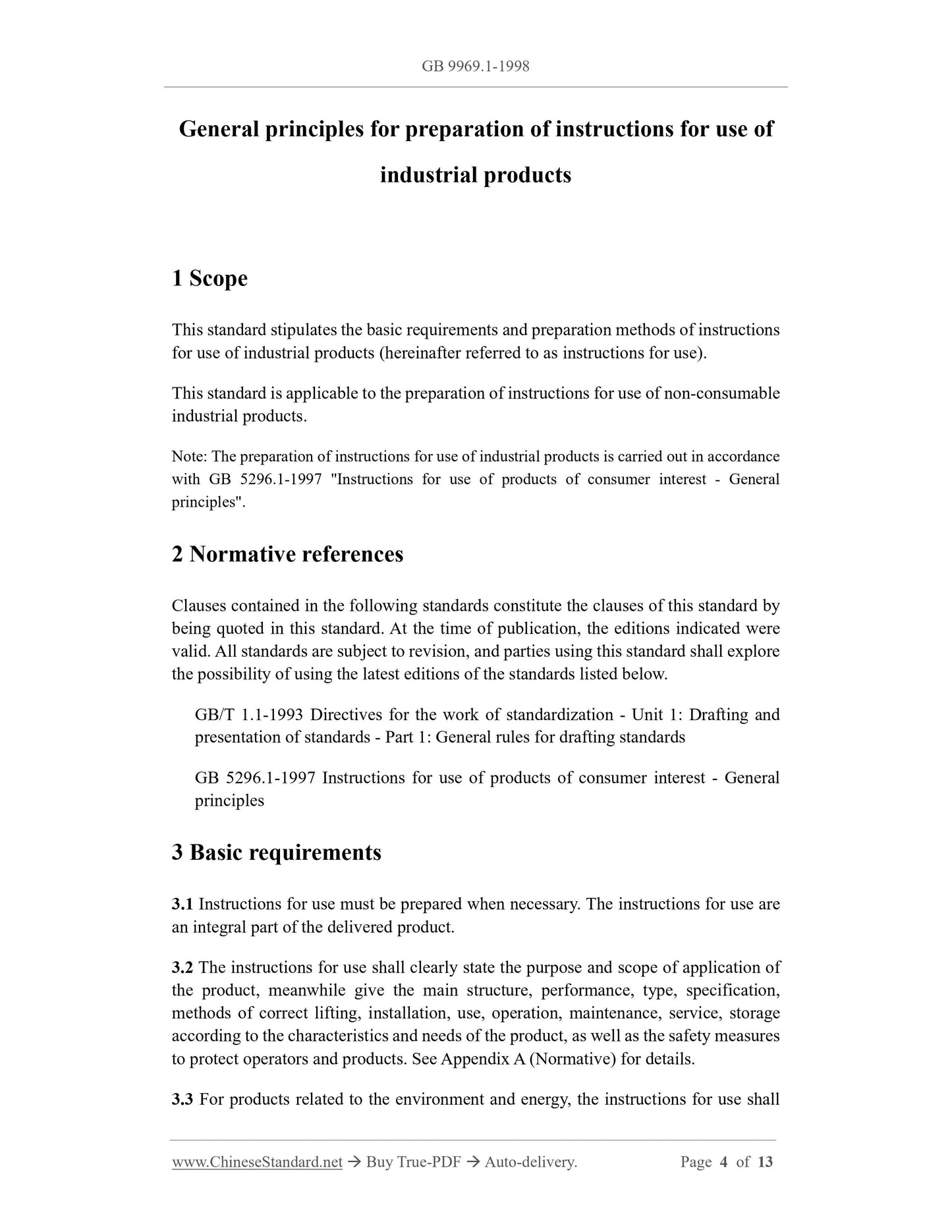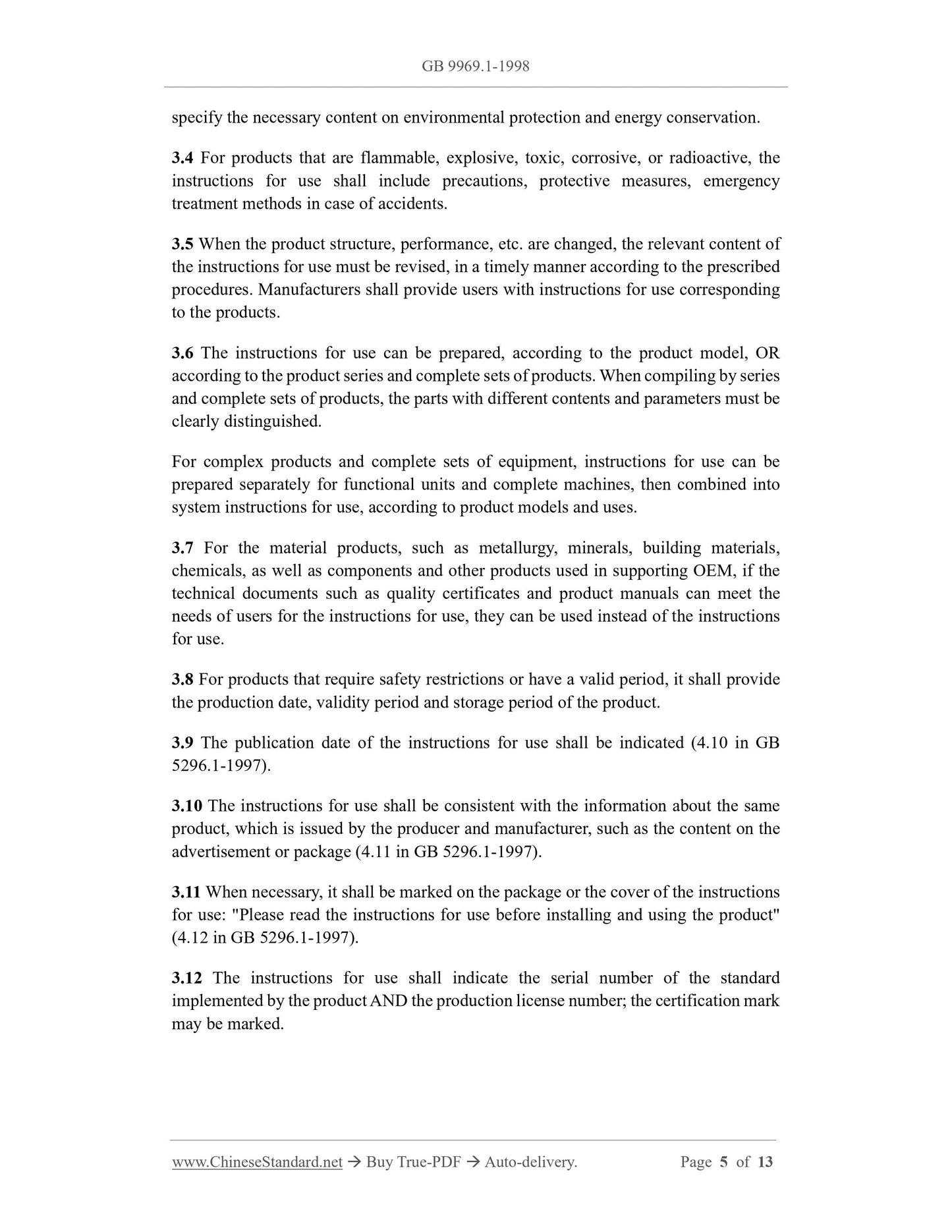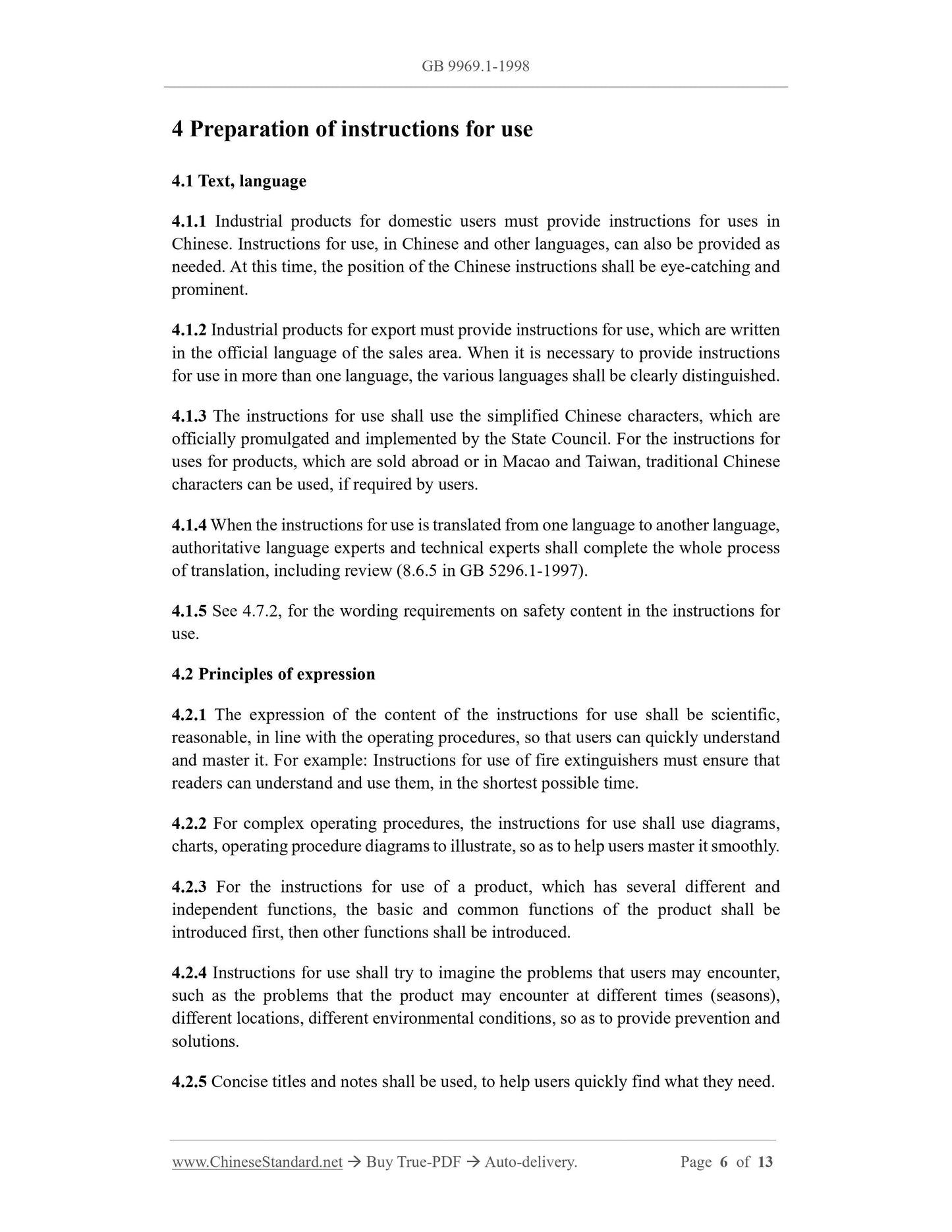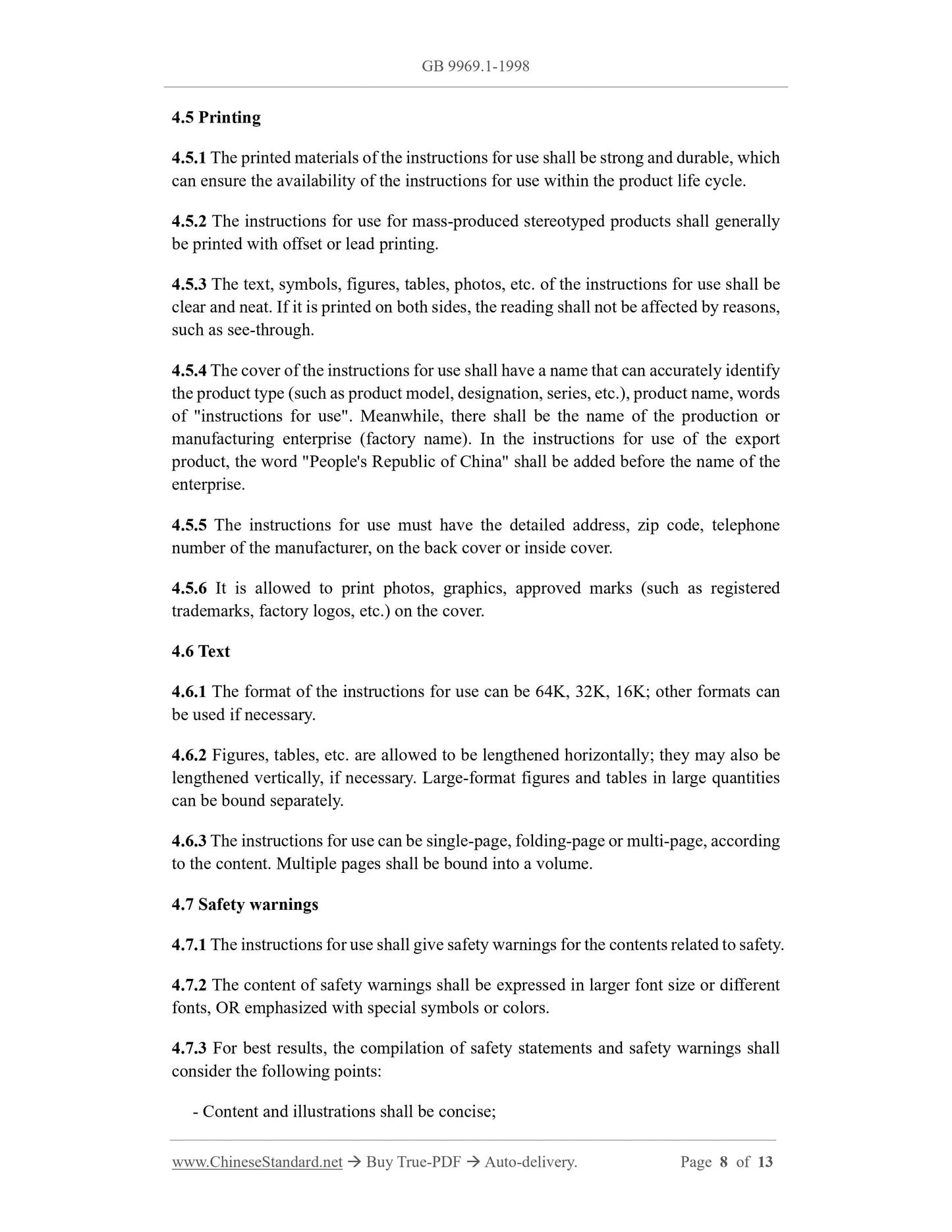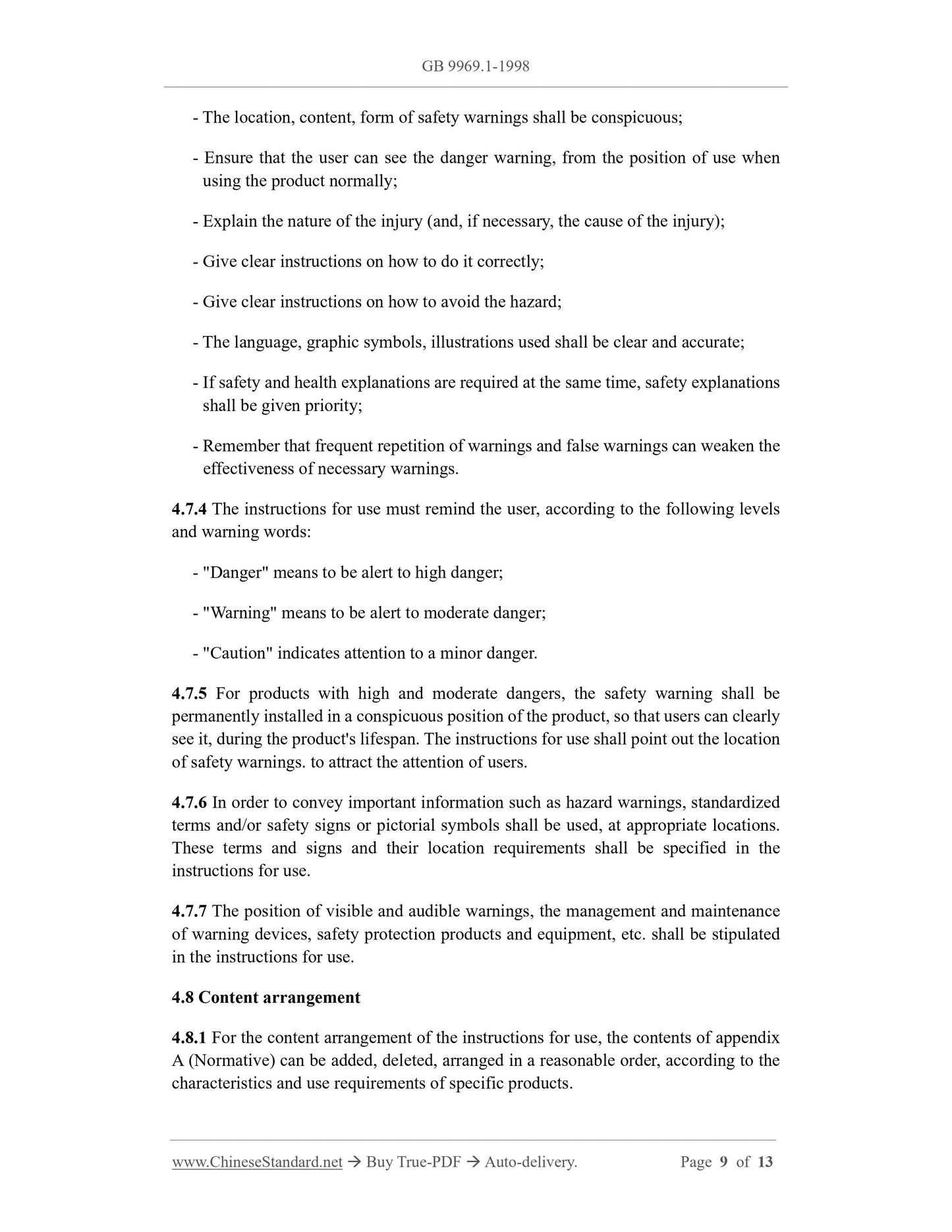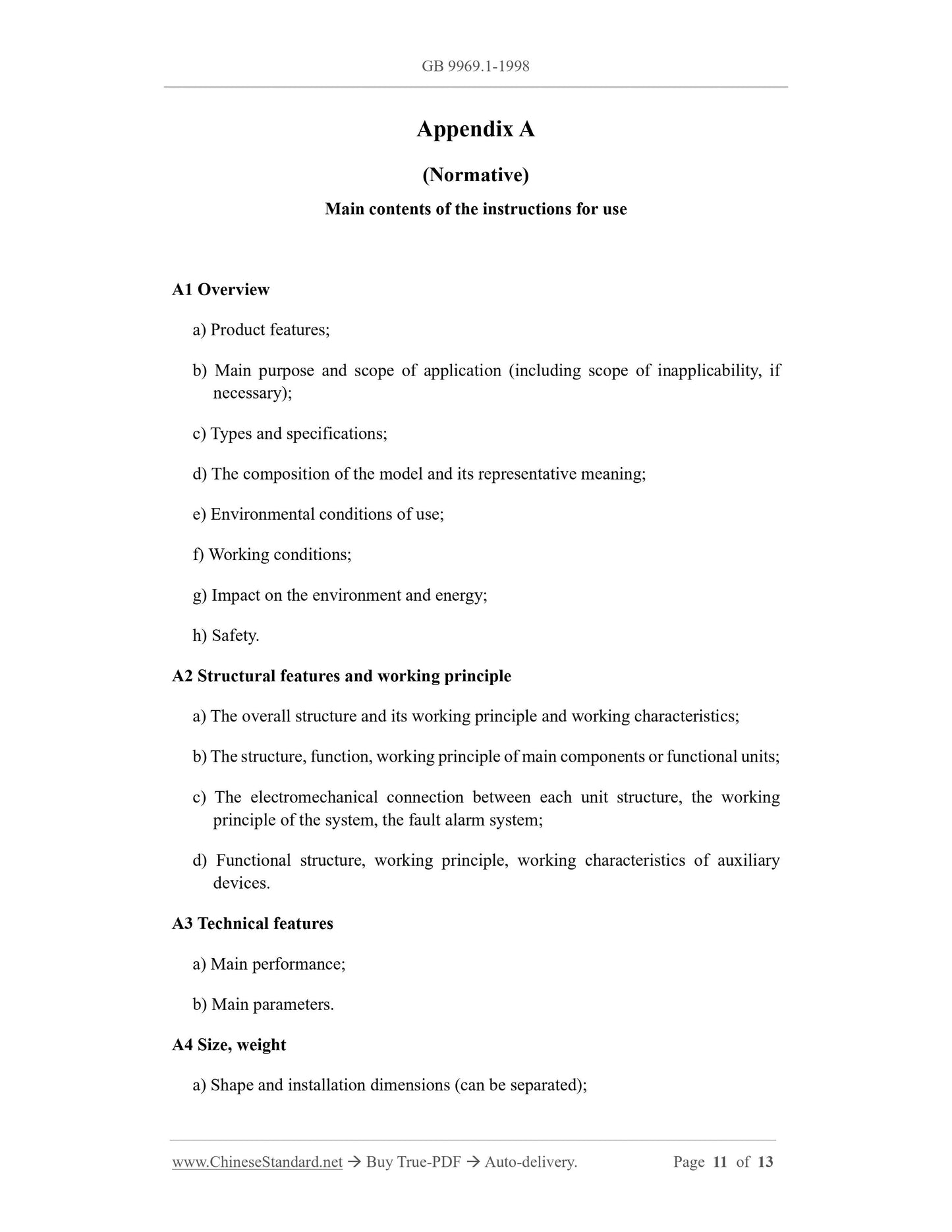1
/
of
8
PayPal, credit cards. Download editable-PDF & invoice In 1 second!
GB 9969.1-1998 English PDF
GB 9969.1-1998 English PDF
Regular price
$275.00
Regular price
Sale price
$275.00
Unit price
/
per
Shipping calculated at checkout.
Couldn't load pickup availability
GB 9969.1-1998: General principles for preparation of instructions for use of industrial products
Delivery: 9 seconds. Download (and Email) true-PDF + Invoice.Get Quotation: Click GB 9969.1-1998 (Self-service in 1-minute)
Newer / historical versions: GB 9969.1-1998
Preview True-PDF
Scope
This standard stipulates the basic requirements and preparation methods of instructionsfor use of industrial products (hereinafter referred to as instructions for use).
This standard is applicable to the preparation of instructions for use of non-consumable
industrial products.
Note: The preparation of instructions for use of industrial products is carried out in accordance
with GB 5296.1-1997 "Instructions for use of products of consumer interest - General
principles".
Basic Data
| Standard ID | GB 9969.1-1998 (GB9969.1-1998) |
| Description (Translated English) | General principles for preparation of instructions for use of industrial products |
| Sector / Industry | National Standard |
| Classification of Chinese Standard | A12 |
| Classification of International Standard | 1.11 |
| Word Count Estimation | 7,722 |
| Date of Issue | 3/25/1998 |
| Date of Implementation | 10/1/1998 |
| Older Standard (superseded by this standard) | GB 9969.1-1988 |
| Quoted Standard | GB/T 1.1-1993; GB 5296.1-1997 |
| Adopted Standard | ISO/IEC GUIDE 37, NEQ |
| Regulation (derived from) | Announcement of Newly Approved National Standards No. 19, 2008 (No. 132 overall |
| Issuing agency(ies) | State Bureau of Technical Supervision |
| Summary | This Standard specifies industrial products and preparation methods using the basic requirements of the specification. This Standard is applicable to the preparation of non-consumer goods, industrial products manual. |
Share
